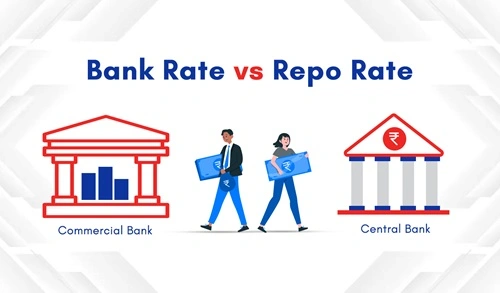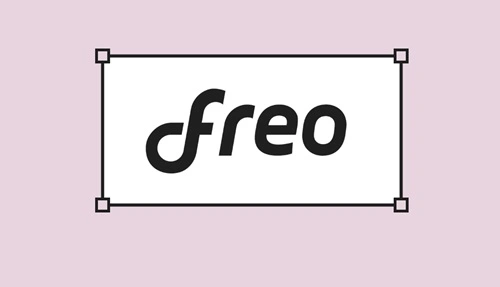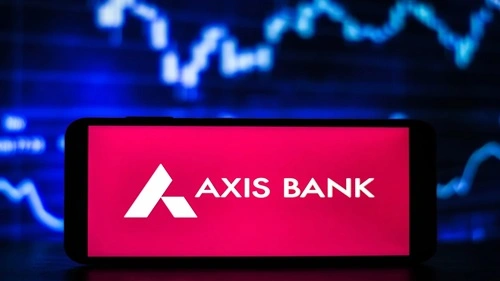If you keep up with whatever is going on in the news headlines, especially when it is regarding money talks or the banking scene of the country, then you might have seen or heard of terms like bank rate and repo rate, correct? Well, most people don’t know what these terms even mean; some even confuse them like they are the same thing, but that’s not the case. And when you try to get to know a little more about these terms, you’ll find that often, it seems a little too complicated to understand because these (bank rate and repo rate) are some of the most important concepts in the banking scene. Though, today, we’ll try to explain them in the simplest words possible, and we will also be letting you know about the key differences between these two, and that’s just because it is going to be an in-depth lowdown on bank rate vs repo rate. So, here we go.
What’s This Thing Called Repo Rate?

See, as you may already know, it is the RBI that is at the top of the banking system right here in India, and all the other commercial banks borrow money from RBI directly. So, there must be some sort of interest rate involved, right? Like, the interest rate that the RBI charges these commercial banks, and that is what we call repo rate, but the thing is, in the repo rate case, RBI only lends money to the commercial banks against government securities as collateral. Plain and simple. It is often known as the Repurchase Option/Rate. We’ll come to the function, benefits, and all those things later about this type of interest rate.
And What on Earth is the Bank Rate?
If you go by the definition, the bank rate seems pretty similar to the repo rate. But there is one crucial detail you are leaving out. What’s that? Well, you see, in the case of bank rate, RBI lends money to commercial banks WITHOUT any security or collateral. Now, do you get it? Like, there is no need to give government bonds or anything in return. While repo rate is usually for short-term, bank rates, on the other hand, are mostly for longer-term loans.
Key Differences Between Bank Rate And Repo Rate
1. Type of Lending
When we talk about the type of lending, you’ll clearly see a difference between repo rate and bank rate. In the case of bank rate, banks go to RBI for long-term funds only, whereas the repo rate is more for the short-term loans. If you keep this fact in mind, you’ll easily be able to differentiate between these two.
2. Collateral
If you read through the explanation part of these two types of interest rates, then you already know about the collateral required. Right? Still, just so you know, in the case of repo rate, banks must give collateral to the RBI in the form of government bonds or securities, and only then can they get a loan amount, and in this case, the repo rate is applied. The exact opposite is when banks aren’t required to provide any collateral, and that’s where the bank rate is applied. It’s a clean loan without securities.
3. Purpose
Oh, this one is the interesting part, and once again, here is a clear distinction between these two. So, when it comes to the repo rate, it is mainly put in action to control day-to-day liquidity, which is also known as cash availability, in the banking system/economy.
And what about the bank rate then? Well, since it is more of a long-term thing, that is why the bank rate is mainly used when the RBI wants to manage inflation and the overall money supply.
4. How It Affects the Economy
And this one is going to be an interesting one too, you see, when you notice those quick and sudden loan interest rate changes in the country, that’s probably because of the repo rate working behind the scenes. So the effect of it on the economy and the liquidity in the country is somewhat quick.
Bank rates, though, have somewhat of an indirect and a bit slow impact on the overall economy of the country. Why? Well, that’s just because with bank rate, RBI tries to control things in a longer period of time to change the broader lending rates in the long run.
5. Role in Monetary Policy
The thing is, you’ll see the repo rate being mentioned in the headlines and in the RBI monetary policies more often because that’s how it is. It is a frequent tool used by RBI for regular policy adjustments.
When there is a clear but long-term monetary direction that the banking system and the economy need to go to, then the bank rate is used. And since it is not something that you use very often, that’s why it is less common, and you don’t hear about it regularly.
6. Cost of Borrowing
See, the need or involvement of collateral can change the cost of borrowing big time actually. How? Well, we clearly see the impact of that in the repo rate where collateral is involved, and it is for short-term loans only, and that’s why it is lower than the bank rate.
Though there is often not a huge difference in repo rate and bank rate, when it comes to how high these rates are, but still, most of the time, you’ll see that the bank rate is higher than the repo rate. That’s just because the loan given to the banks is high risk in nature without the involvement of collateral.
7. Who Gets Affected?
See, the effect of repo rate changes can be seen or felt by us regular people, how? Well, that’s just because repo rates have a direct impact on things like home loans, car loans, personal loans, etc.
Since bank rate is about the changes that come in the long run, that’s why you don’t notice it very often. Still, the bank rate is very important because it influences the base lending rates in a long period of time.

